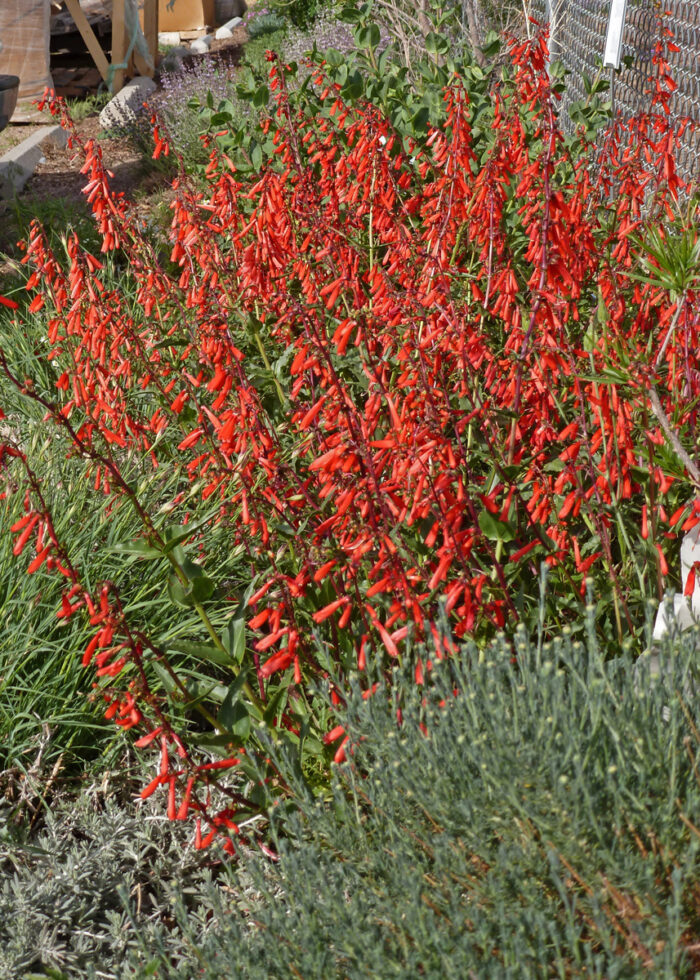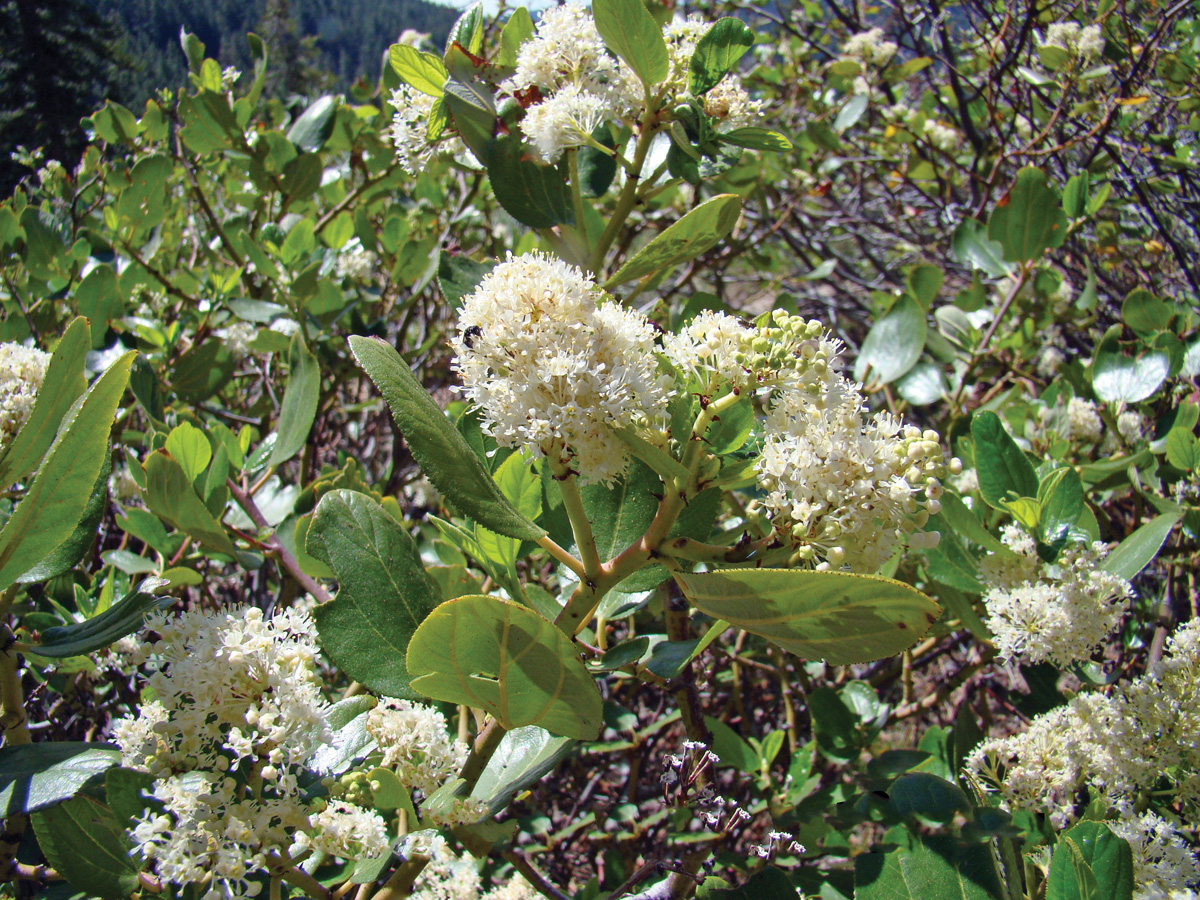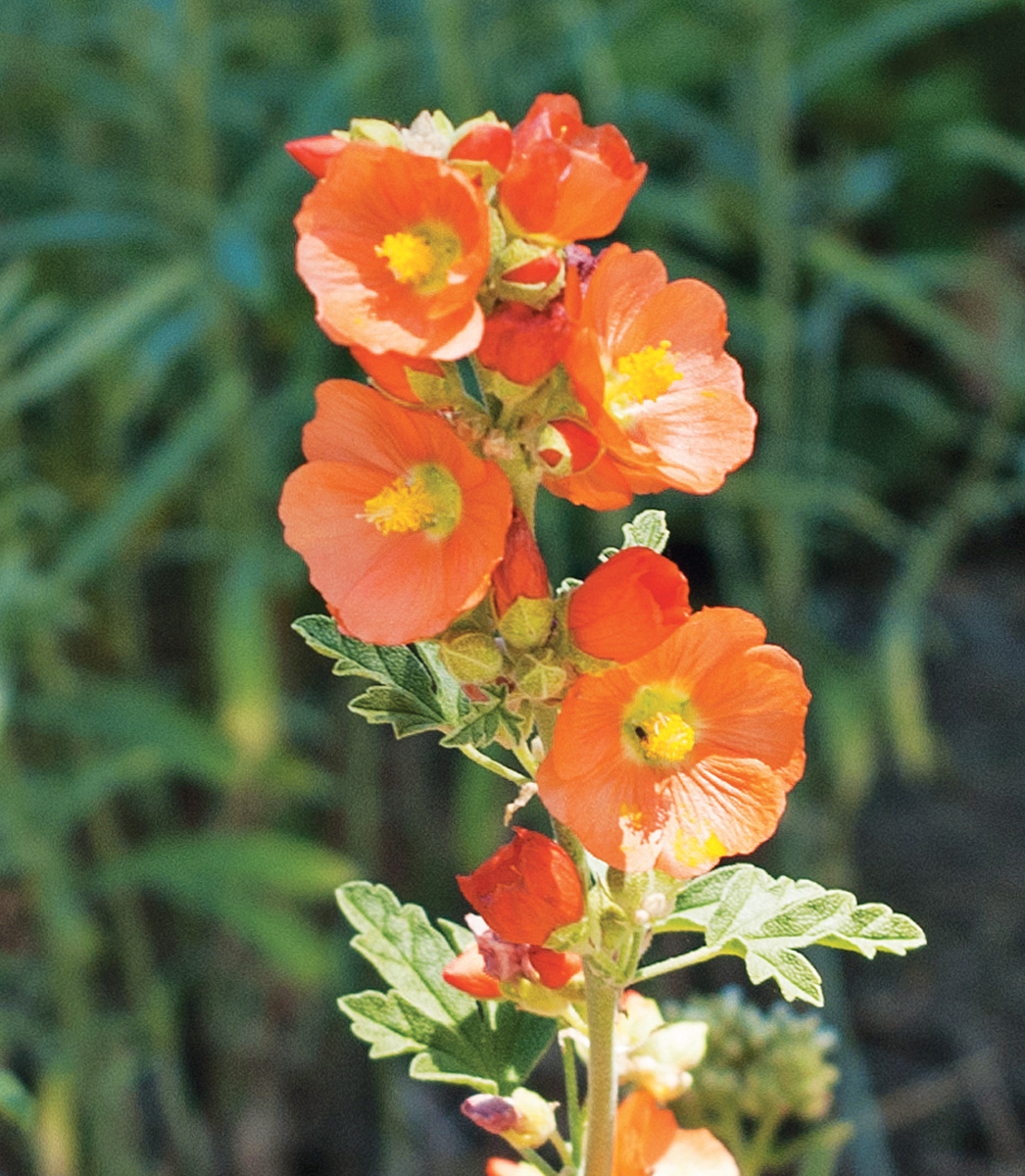
Firecracker penstemon
Penstemon eatonii
Zones: 4–9
Size: 18 to 36 inches tall and 10 to 15 inches wide
Conditions: Full sun to partial shade; dry, well-drained soil
Native range: Central-west and southwestern United States
Few native plants have an extended bloom period to rival that of firecracker penstemon. Even when it’s not in bloom, the deep green leaves are a nice break from all the gray and blue foliage often found in dry gardens. Long spikes of flowers open in succession starting in early summer and continue for many weeks. The deep red tubular blooms attract hummingbirds, and the wiry stems need no staking. Firecracker penstemon also makes for a great cut flower. Don’t provide it with too much water or rich soil, however; it may bloom more heavily but fail to return the next year. This plant is best grown in dry, sandy, or gravelly soil.
Snowbrush ceanothus
Ceanothus velutinus
Zones: 4–8
Size: 2 to 10 feet tall and 5 to 15 feet wide
Conditions: Full sun to partial shade; well-drained soil
Native range: Western United States, southern British Columbia
I love fragrant foliage, and the shiny, resinous leaves of snowbrush ceanothus are a favorite with their scent of balsam and cinnamon. Fluffy panicles of ivory flowers appear at the ends of stems in early summer. This shrub grows well in infertile soil because the roots form an association with Frankia bacteria that help it fix nitrogen. Winter injury or browsing by animals may cause it to die back in winter, but since it blooms on new wood and can quickly produce new growth, that isn’t a problem. The height and spread of this shrub can be managed easily with pruning. It is not particular about soil texture or pH and can withstand moderate drought. Site it where it’s protected from dry winter winds, or bury it in deep loose mulch where winter snow cover is lacking.
Colorado four o’clock
Mirabilis multiflora
Zones: 4–8
Size: 15 to 18 inches tall and 3 to 4 feet wide
Conditions: Full sun to partial shade; dry, well-drained soil
Native range: Central-west and southwestern United States, northern Mexico
When I was young, I remember watching four o’clocks open in late afternoon with fascination. The alluring fragrance of their bright magenta flowers makes them a great choice for entryways and along paths. You’ll often find hummingbirds and hawk moths feasting on the abundant nectar they provide. This long-lived perennial is superbly drought tolerant thanks to its deep roots. Colorado four o’clock blooms most of the summer, and its short spreading habit and lovely blue-green leaves make it a great ground cover for dry areas. Maintenance is simple—just mow or cut the plant down to ground level before the first hard frost.
Munro’s globemallow
Sphaeralcea munroana
Zones: 4–9
Size: 16 to 36 inches tall and 18 to 24 inches wide
Conditions: Full sun to partial shade; well-drained soil
Native range: Central-west and northwestern United States, southern British Columbia
The lovely spikes of abundant peachy-orange blooms and attractive gray-green leaves draw attention to Munro’s globemallow in summer. Bright golden anthers at the center of each flower make them glow. The woody crown of this plant can survive all kinds of abuse, including grazing by animals, prolonged drought, and extreme cold. It’s a great plant for native bees that feed on its pollen and nectar. It can even be grown in a large container, and the semi-evergreen foliage provides winter interest. Although this globemallow can sail through almost any drought, a bit of water during dry times will keep it blooming late in the summer. This perennial can grow in sand or clay.
Back to Natives for Summer Interest Collection
Scott Aker is the director of the Cheyenne Botanic Gardens in Wyoming.
Fine Gardening Recommended Products

A.M. Leonard Deluxe Soil Knife & Leather Sheath Combo
Fine Gardening receives a commission for items purchased through links on this site, including Amazon Associates and other affiliate advertising programs.





















Comments
Log in or create an account to post a comment.
Sign up Log in